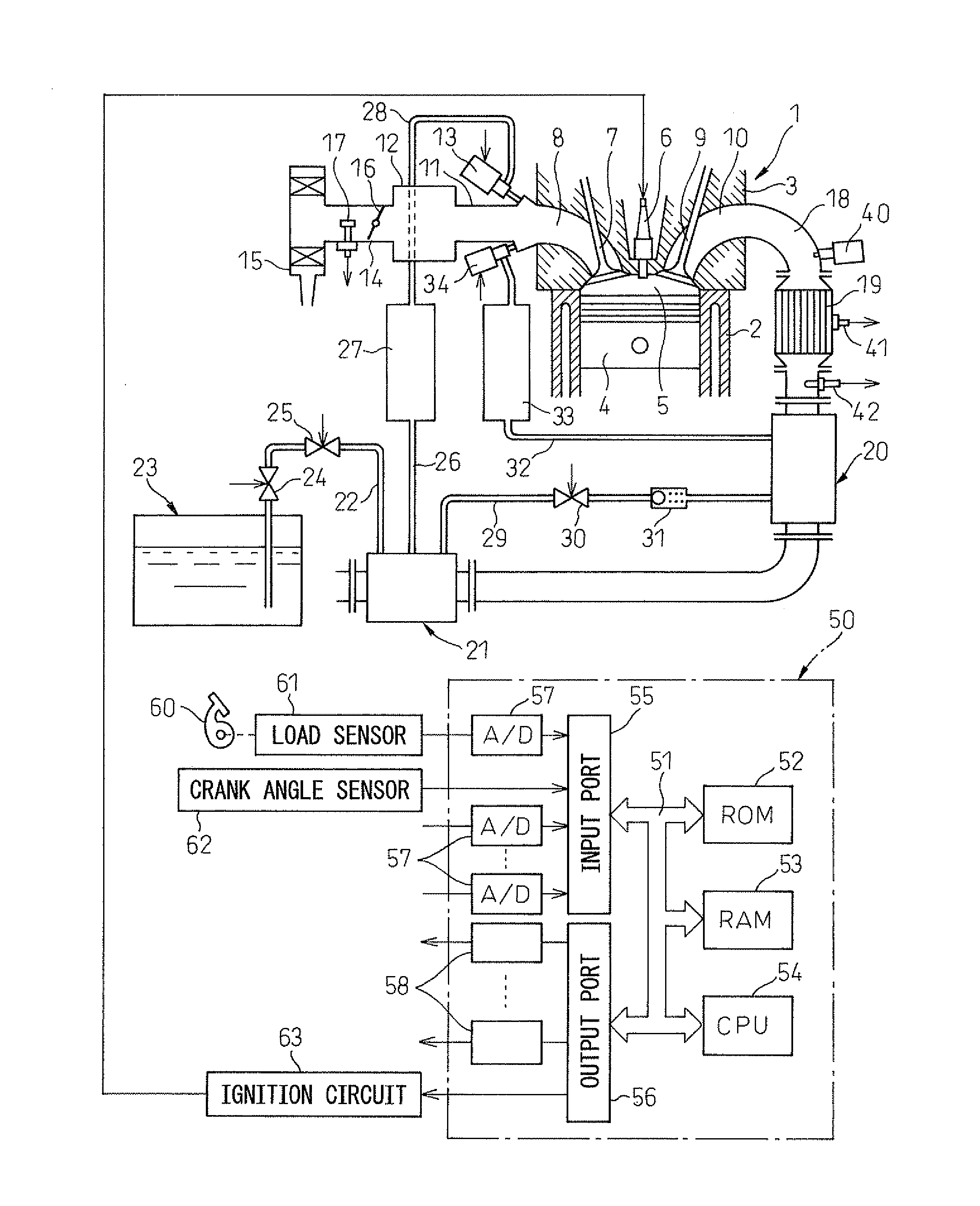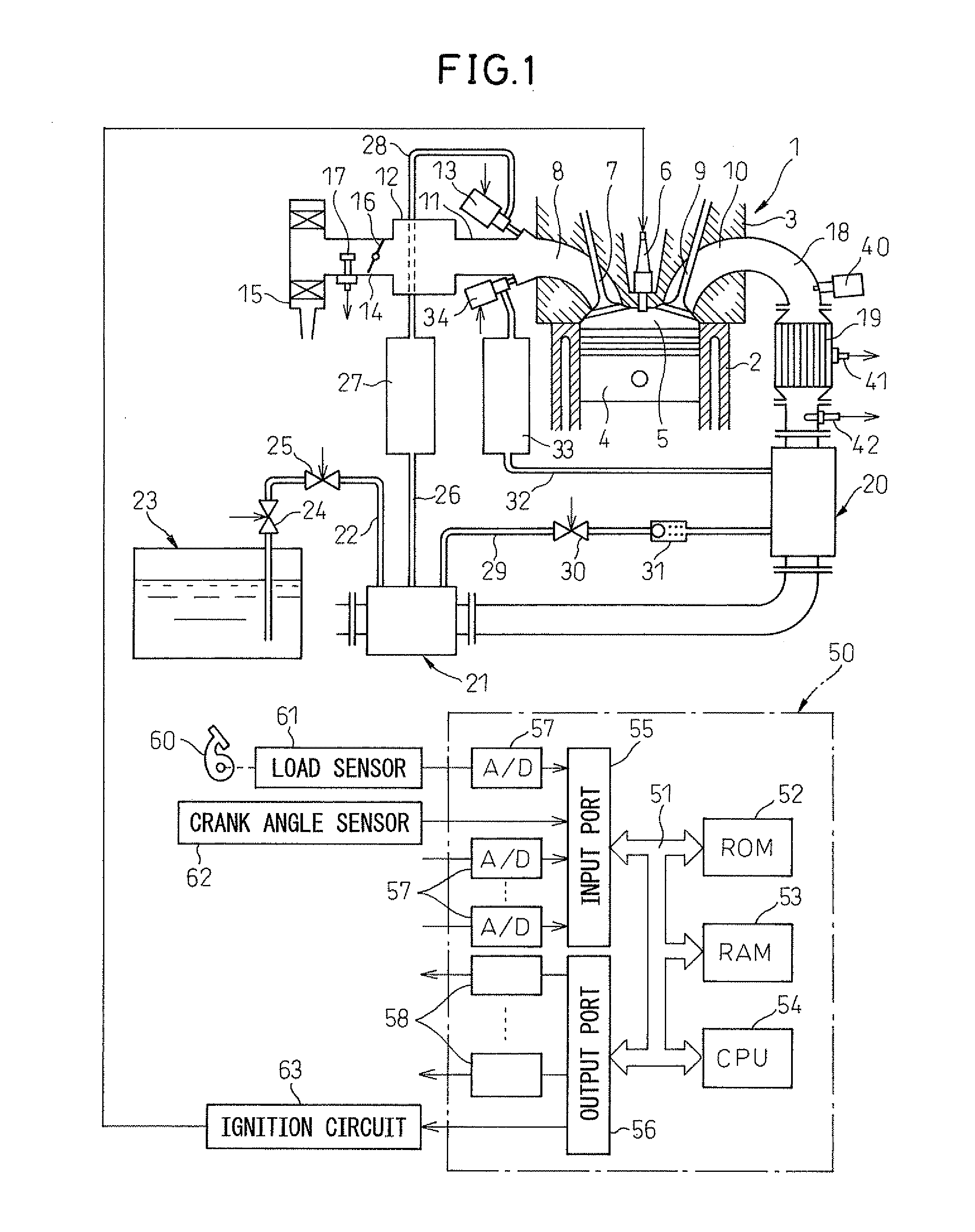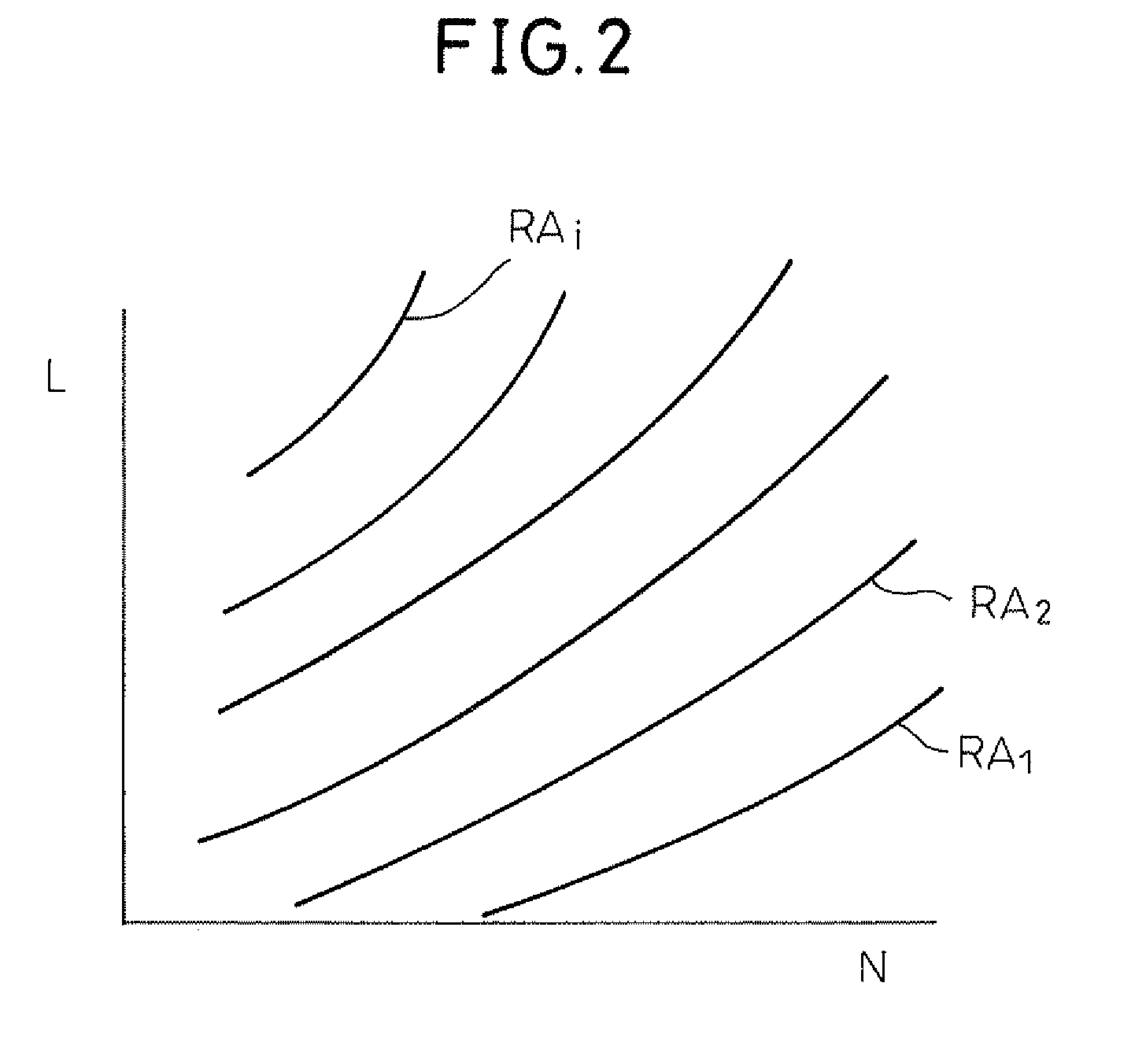Control system of internal combustion engine
a control system and internal combustion engine technology, applied in the direction of machines/engines, process and machine control, gaseous engine fuels, etc., can solve the problems of global warming, ammonia burning does not produce cosub>2/sub>at all, and ammonia is harder to burn compared with fossil fuels
- Summary
- Abstract
- Description
- Claims
- Application Information
AI Technical Summary
Benefits of technology
Problems solved by technology
Method used
Image
Examples
first embodiment
[0042]Next, a first embodiment according to the present invention will be explained with reference to the timing chart at the time of deceleration shown in FIG. 3. Note that, in FIG. 3, the engine speed N, air-fuel ratio (A / F)g in the combustion chamber 5, air-fuel ratio (A / F)c of the exhaust gas in the exhaust purification catalyst 19, and the change of the ammonia ratio are shown.
[0043]In FIG. 3, Nc indicates a feed suspension lower limit speed. When the accelerator pedal 60 is released and deceleration is commenced, feed of the fuel is suspended if the engine speed N is higher than this feed suspension lower limit speed Nc. On the other hand, in FIG. 3, Ns indicates a resume speed. After the suspension of feed of the fuel, when the engine speed N becomes this resume speed Ns or less, feed of the fuel is restarted. Accordingly, as shown in FIG. 3, feed of the fuel is suspended during a term after the start of deceleration until when the engine speed N is lowered to the resume spee...
second embodiment
[0058]FIG. 7 shows a timing chart of a In this FIG. 7, in the same way as FIG. 3, changes of the engine speed N, air-fuel ratio (A / F)g in the combustion chamber 5, air-fuel ratio (A / F)c of the exhaust gas in the exhaust purification catalyst 19, and the ammonia ratio are shown.
[0059]As will be understood from FIG. 7, in this second embodiment, at the time when feed of the fuel is restarted after suspension of feed of the fuel at the time of deceleration, the air-fuel ratio (A / F)g is temporarily made rich. Namely, in this second embodiment, as shown in FIG. 7, the air-fuel ratio is made rich during the period where the air-fuel ratio (A / F)c of the exhaust gas flowing out from the exhaust purification catalyst 19 is lean after the restart of the feed of the fuel. In this way, when the air-fuel ratio is made rich, the time during which the exhaust purification catalyst 19 exhibits a lean state can be made short, and thus discharge of N2O into the atmosphere can be suppressed.
[0060]Fur...
third embodiment
[0072]FIG. 12 shows a fuel injection control routine for executing a Referring to FIG. 12, first of all, at step 100, the basic ammonia ratio RA is calculated from the map shown in FIG. 2. Next, at step 101, the target air-fuel ratio (A / F)t is calculated. In this embodiment as well, this target air-fuel ratio (A / F)t is set to the stoichiometric air-fuel ratio. Next, at step 102, the temperature TC of the exhaust purification catalyst 19 detected by the temperature sensor 41 is read. Next, at step 103, the reduction ΔR of ammonia is calculated from the relationship shown in FIG. 11.
[0073]Next, at step 104, the reference ammonia ratio RA is reduced by the reduction ΔR. Namely, if ΔR>0 at this time, the ammonia ratio RA targeted is lowered. Next, at step 105, the intake air amount detected by the intake air amount detector 17 is read. Next, at step 106, the amount of ammonia to be injected from the ammonia injector 13 and the amount of the second fuel to be injected from the fuel inje...
PUM
 Login to View More
Login to View More Abstract
Description
Claims
Application Information
 Login to View More
Login to View More - R&D
- Intellectual Property
- Life Sciences
- Materials
- Tech Scout
- Unparalleled Data Quality
- Higher Quality Content
- 60% Fewer Hallucinations
Browse by: Latest US Patents, China's latest patents, Technical Efficacy Thesaurus, Application Domain, Technology Topic, Popular Technical Reports.
© 2025 PatSnap. All rights reserved.Legal|Privacy policy|Modern Slavery Act Transparency Statement|Sitemap|About US| Contact US: help@patsnap.com



